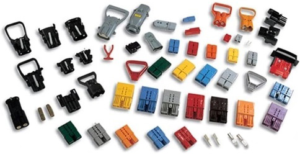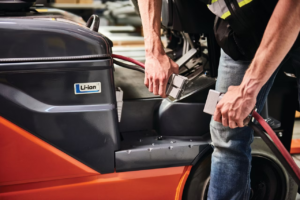Forklift Battery Chargers: Key Features, Benefits, and Future Trends
Introduction
Forklift battery chargers are critical components in material handling operations, ensuring efficient power delivery and maximizing battery lifespan. As industries shift toward electrification and sustainability, understanding the nuances of these chargers becomes essential. This article covers their working principles, types, best practices, and emerging innovations.
1. How Forklift Battery Chargers Work
Forklift battery chargers convert AC power to DC to recharge lead-acid or lithium-ion batteries. Key stages include:
Bulk Phase: Delivers high current to restore ~80% charge quickly.
Absorption Phase: Slower charging to avoid overheating.
Float Phase: Maintains optimal charge without overcharging.
Advanced chargers use microprocessor controls to adjust voltage/current based on battery conditions.
2. Types of Forklift Battery Chargers
Conventional (Ferroresonant): Rugged but less efficient; suited for older lead-acid batteries.
High-Frequency (Switched-Mode): Lightweight, 90%+ efficiency; ideal for lithium-ion.
Opportunity Chargers: Fast, partial charges during breaks—popular in multi-shift operations.
Onboard Chargers: Integrated into electric forklifts for convenience.
3. Benefits of Modern Chargers
Energy Savings: Smart chargers reduce electricity costs by 20–30%.
Battery Longevity: Precision charging prevents sulfation (lead-acid) or voltage stress (lithium).
Telematics: IoT-enabled models provide real-time diagnostics and fleet management data.
4. Best Practices for Charger Use
Match Charger to Battery: Voltage/amp ratings must align with battery specs.
Cool Down Batteries: Allow 30+ minutes before recharging to prevent damage.
Avoid Partial Charges (Lead-Acid): Deep discharges shorten lifespan.
Regular Maintenance: Clean terminals and inspect cables monthly.
5. Future Trends
Fast-Charging Lithium Tech: New chemistries enable 1-hour full charges.
Wireless Charging: Pilot projects for autonomous forklifts are underway.
AI Optimization: Predictive algorithms adjust charging based on usage patterns.
Conclusion
Investing in the right forklift battery charger improves ROI, safety, and sustainability. As lithium-ion adoption grows and smart features evolve, staying informed will help businesses optimize their operations.
Looking for a charger tailored to your needs? [Contact us/Explore our products] for expert guidance.
Key Enhancements vs. Source Material:
Updated Trends: Added wireless charging and AI, reflecting 2025 innovations.
Simplified Technical Jargon: Easier readability for non-technical readers.
Actionable Tips: Included practical maintenance advice.
Let me know if you’d like to emphasize specific sections (e.g., lithium-ion comparisons) or add a vendor comparison table!



